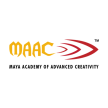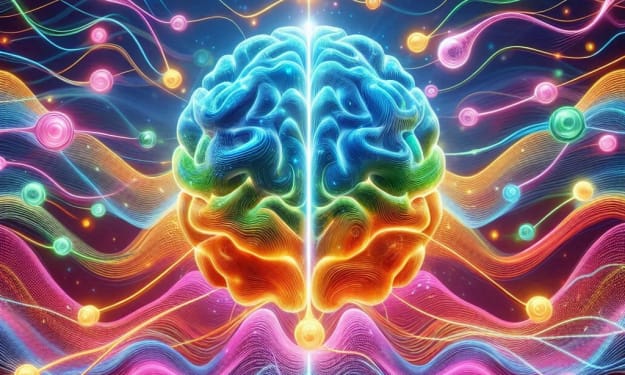What Is 3D Animation? Types, Process &Uses
Covering the Essentials of 3D Animation for the Beginners: A Comprehensive Guide

Introduction
Amidst the tapestry of visual narratives, 3D animation emerges as a beacon of innovation and boundless creativity. Did you know? The global animation market is poised to soar beyond $300 billion by 2027, a testament to the unrivaled versatility and dynamic impact of 3D animation. From Media & Entertainment to Real Estate, Marketing, and beyond, its transformative power resonates across industries, shaping the future of storytelling.
In today’s fiercely competitive landscape, mastering the realm of 3D animation begins with a solid grasp of its diverse types, intricate processes, and expansive applications. This blog delves deep into the art of visual storytelling, unveiling the techniques and methodologies that breathe life into captivating 3D animations. Join us as we unravel the secrets behind crafting immersive narratives that captivate and inspire.
Types of 3D Animations
With the continuous advancement in the technology front, 3D animation has made significant strides with the different types of 3D animation each offering unique storytelling possibilities, with each offering a similar objective of presenting a realistic world for the audience. Here is the complete list of 3D animation technology variants that are readily available in present-day animation movies.
Interactive 3D-:
Unlike the previous variants of 3D animation which heavily relied on the visual experience, interactive 3D is a form of animation that purely features digital reality. However, video and film animation involves user interaction over mere visual representation. With this type, users experience animation either from a first-person or a third-person perspective allowing them to navigate through a 3D environment using external controls such as mouse and sensor controllers. This environment allows users to partially enforce control of the animation world making this type of animation a more preferred choice among those taking animation to a higher level.
Virtual Reality 3D Animation -:
Much akin to interactive 3D, VR animation opens the gateway to the immersive experience of the 3D environment to a completely new world of users. Developed using 3D-based software, this type of animation gives a perception of realistic physical attributes and events within a virtual 3D environment using elements like audio, video, haptic feedback and other environmental controls like wind flow, temperate variation among others to give a degree of realism and perceptibility to the next level.
Architectural Animation-:
Architectural animation is a dynamic tool that gives a new dimension to the static representation of building blueprints into three-dimensional visualizations offering an immersive experience to all the stakeholders. Unlike the conventional mode of rendering building designs, architectural animation involves creating frames that replicate the movement around a 3D model representing a building or any space. Its application can be seen widely in commercial real-estate marketing where architectural animations serve as a potent tool in highlighting a building's prime features, facilities and the nearby urban setting. Moreover, not only this type of animation gaining popularity with each passing day but also offers increased engagement metrics to real-estate businesses and urban planning committees.
Processes Involved in 3D animation
Here, in this section we'll see what types of processes are involved in the development of a 3D animation:
1: Conceptualization and storyboarding:
- Starting Point for Conceptualization: A Series of drawings outline the final 3D animation.
- Purpose of Storyboarding: Guides animators through key moments or scenes.
- Coverage: Spans the entire lifecycle of an animation project.
- Importance: Defines requirements for the production team before finalizing animation.
2: Modelling:
Process of Modelling:
- Involves bringing animation characters, objects, and environments to life.
- Begins with accumulating visual references.
- Ends with the rendition stage displaying the 3D model.
UV Mapping:
- Technique in modelling.
- Manipulates 3D mesh geometry for 2D textured objects.
3: Texturing:
Texturing Process:
- Overlaps a 2D object onto a 3D model.
- Lighting plays a crucial role in the visual appearance.
Purpose:
- Adds detailing to objects.
- Enhances attributes such as depth, structure, and colour patterns.
4: Rigging:
Rigging Process:
- Creates circuitry to control animation characters using bones or digital skeletons.
- Crucial for character movement and control in their environment.
Creation of 3D Mesh:
- Acts as a virtual skin for animated characters.
- Enhances realism in appearance.
5: Keyframing:
Keyframes in Animation:
- Animator's clues directing movement in animation software.
- Define the starting and ending positions of characters within frames over time.
6: Rendering:
Rendering Process:
- Obtains the final animation output from 3D models and created environments.
- Translates complex 3D scenes into 2D image sequences (frames).
Importance of Lighting:
- Alters the mood and tone of the animation sequence.
- Plays a key role in enhancing visual effects.
Types of Animation Techniques
Let’s explore a few techniques commonly used in deducing use-specific animations-:
- Inverse kinematics: It is a technique primarily used in implementing motion-based elements through rigging to create the perception of motion in inanimate objects. With the aid of rigging techniques, animators could make characters pose in complex ways by eliminating the manual ways of performing advanced animation.
- Fluid Simulation: As the name suggests, this animation technique is most commonly seen when filming spectacular real-world animations of fluids such as water, air and bubbles creating stunning visual effects with the desirable level of realism and pragmatism in the design and animation.
- 3D Skeletal Animation: Giving rise to a real-life character that remains relatable to a particular league of audience happens when the animation technique displays realism through complex bodily motions showcased by humans. It involves creating the rigs or skeletons constricting bodily motions while the mesh depicts the skin or outer covering/sheath corresponding to human skin. It is one of the widely used techniques to impart a greater degree of detailing into a description of each character.
Uses of 3D Animation in Contemporary World
Below is the list of applications of 3D animation across the industries-:
1: Advertising & Marketing:
Nowadays, marketers resort to rich imagery and product visualization approaches to foster their product marketing strategies. This brings into the picture the role-play of 3D animation in the illustration of products using 3D models to enhance engagement with consumers and increase brand loyalty.
2: Films & Television:
Films and Television industry showcases the intensive use of binding live visual effects to the 3D animations to make action scenes appear as real-life. Moreover, media houses use 3D animation as a pre-visualization technique before the production of the final output.
3: Medical & Scientific Purposes:
Just like robotics, medical professionals extensively use 3D animations to plan complex surgeries through simulations of complex anatomical models. This, not only helps them in understanding the complex biological processes involved in the treatment of ailments but also increases the preparedness for surgical outcomes. Moreover, it is also widely used for imparting training in medical sciences to practitioners.
Conclusion
This brings us to the end of the blog, covering the essentials of 3D animation to master the skills required by an animator. We covered the most commonly used types of animations with their applications and the key animation techniques that play a pivotal role in the entire animation cycle. Lastly, we covered the varied processes involved in animation from the beginning till the end. Above are just some of the preliminary insights to begin a career in 3D animation, MAAC Ghaziabad, a 3D Animation Institute in Ghaziabad, offers a detailed course curriculum in 3D animation.
About the Creator
Official MAAC
MAAC Ghaziabad stands out as a leader in Ghaziabad for training in graphic design, animation (2D & 3D), VFX, game design, multimedia, broadcasting, and other creative fields.
Enjoyed the story? Support the Creator.
Subscribe for free to receive all their stories in your feed. You could also pledge your support or give them a one-off tip, letting them know you appreciate their work.






Comments
There are no comments for this story
Be the first to respond and start the conversation.